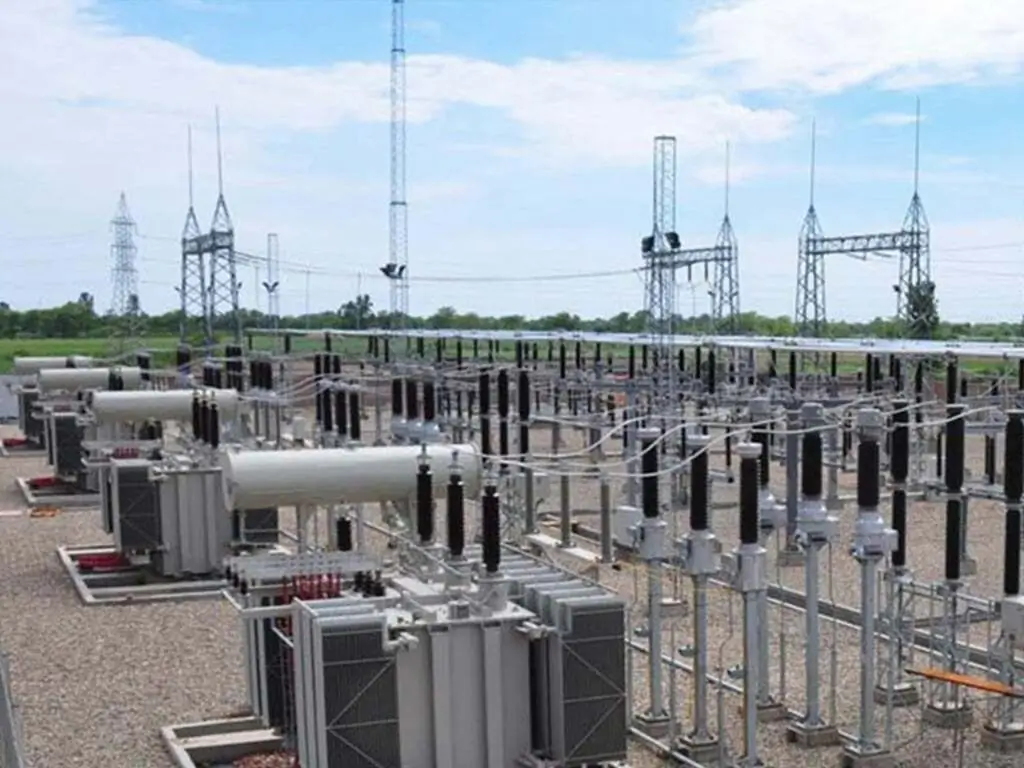Pakistan’s energy sector is mired in a deep-rooted crisis, primarily due to the increasing capacity payments to Independent Power Producers (IPPs), which have rendered electricity unsustainably expensive. The privatization of power, stemming from Pakistan’s neoliberal energy privatization policy, has led to hyper-expensive electricity, significantly contributing to the country’s ongoing economic challenges. Although privatization initially succeeded in attracting Foreign Direct Investment (FDI), it has exacerbated the crisis due to inefficiencies in contract negotiations, overcapacity in power plants, and severe financial burdens caused by dollar-based contracts, PKR devaluation, and reliance on imported hydrocarbons. To stabilize electricity prices and promote sustainable economic growth, Pakistan must renegotiate its IPP agreements, diversify its energy mix, and strengthen regulatory oversight.
Historical Context
The privatization of Pakistan’s energy sector began with the 1994 Private Power Policy, driven by the neoliberal wave that swept across the globe after the collapse of the Soviet Union in 1991 and the establishment of U.S. hegemony in a unipolar world. The Private Power Policy was universally praised by nearly all development institutions and private financiers, products of the liberal school under the Bretton Woods System of 1944. The United States Secretary of Energy, Hazel O’Leary, described the private power policy as the “best energy policy in the world,” and it was commonly referred to as the “Deal of the Decade.”
Energy Secretary Hazel O’Leary visited Pakistan in 1994 with a delegation of 80 American business executives, primarily from the energy sector. The delegation signed 16 contracts worth approximately $4 billion. The U.S. Congress praised O’Leary’s mission, stating, “O’Leary has returned from a highly successful mission to Pakistan, which has opened new doors to American business leaders.”
Background on Capacity Payments
Under the Power Purchase Agreements (PPAs), capacity payments were fixed for the IPPs, meaning that the power plants would remain operational regardless of whether the electricity they generated was used. The capacity payments clause was introduced under the 1994 policy to attract private investment in energy production during a time when Pakistan faced severe power shortages. The policy gained global traction as it offered favorable terms to investors, including a guaranteed dollar-based internal rate of return of 15%–18% over the 25–30-year period of the PPAs, with the dollar rate fixed at the 1994 rate. This implied that the Water and Power Development Authority (WAPDA) would purchase electricity from IPPs at 6.5 US cents per kWh. IPPs were also offered tax exemptions and duty exemptions.
Under this policy, payments to IPPs were divided into two parts: capacity payments and energy payments. The capacity payments were intended to cover all fixed costs, such as debt servicing (80:20 debt-equity ratio) and plant maintenance costs. This agreement implied that WAPDA, PEPCO, and KESC became contractually liable to repay the debt along with the interest payments due to the 80% financing of the project cost. The energy payments were meant to reimburse the IPPs for all variable costs like fuel. All payments were indexed to the USD/PKR exchange rate, meaning that if the PKR devalued or U.S. inflation impacted the dollar, the amount paid to the IPPs would be adjusted accordingly. Additionally, even when power plants were underutilized, the government remained contractually obligated to make these payments under contract law, contributing to a 530% energy price increase since the 1990s.
Factors Contributing to Hyper-Expensive Electricity
- Overcapacity Installation and Inefficiencies
Pakistan’s electricity generation remains highly underutilized despite the substantial increase in installed capacity. The installed capacity reached 45,885 MW in FY 2022-23, while the average capacity stands at 21,566 MW (47%), leading to a situation where capacity payments are being made for idle plants. The underutilization has exacerbated the financial strain on the energy sector, as the government continues to pay for excess capacity that is not required, leading to a rising fiscal deficit and public debt. - Dollar-Based Payments and Currency Depreciation
A key issue of the 1994 power policy is that capacity payments are pegged to the U.S. dollar. This arrangement, initially designed to attract FDI, has become a burden due to the depreciation of the Pakistani rupee, which has devalued by approximately 900% since 1994, increasing the rupee-denominated cost of dollar-linked capacity payments. For example, when the rupee depreciates by 10%, the cost of capacity payments increases proportionally, indicating a severe miscalculation in the contracts. - Fuel Costs and Dependency on Imports
The IPPs relied on thermal power plants over hydropower projects due to the relatively cheaper capital costs. Currently, 62.5% of the installed capacity and 51.79% of all electricity generation in Pakistan is based on thermal power plants. The reliance on thermal power plants has been another factor driving up electricity costs, as Pakistan is heavily reliant on imported fuel. Around 60-65% of the fuel used in power generation is imported, making the country highly vulnerable to fluctuations in global fuel prices. Consequently, when global oil and liquified natural gas (LNG) prices rise, as they have since the Ukraine-Russia war in 2022, the cost of generating electricity in Pakistan skyrockets. - Circular Debt and Economic Impact
The increasing capacity payments have contributed significantly to Pakistan’s growing circular debt, which reached PKR 2.635 trillion in January 2024. The circular debt represents the unpaid dues to power producers, fuel suppliers, and transmission companies. As the government struggles to meet its financial obligations, power producers are forced to curtail production, leading to further economic stagnation. The Asian Development Bank (ADB) has noted that Pakistan loses around 2-3% of GDP annually due to power shortages, a direct consequence of the energy sector’s inefficiencies.
Economic Repercussions of Rising Electricity Costs
Rising electricity costs have contributed to Pakistan’s economic decline. High electricity tariffs have increased the cost of production for industries, contributing to high inflation, which reached 24.5% at the end of 2023. High inflation has led to rising poverty levels, with 39.5% of the population living below the poverty line, according to the IMF. Industries in Pakistan, especially textiles, which contributed $16.65 billion in exports in 2023, have struggled to remain competitive in the global arena due to exorbitant electricity costs.
In addition, the high costs of electricity have severely impacted the government’s fiscal capacity. At the end of 2023, Pakistan’s fiscal deficit was 7.6% of GDP due to increasing expenditures, which also impacted the gross government debt, rising to 76.7% of GDP at the end of FY23. The rising electricity costs have forced the government to provide subsidies to consumers, draining public finances and reducing the government’s capacity to invest in much-needed social services. The government’s failure to pay the dues to IPPs has resulted in power cuts, further hindering economic growth.
Critical Evaluation of Privatization and IPP Policy
The privatization of the power sector in 1994 was promoted as a solution to Pakistan’s energy crisis, but instead, it has become a major contributor to the current electricity crisis. The policy was part of a broader wave of neoliberal reforms implemented to reduce the influence of communist ideas of government intervention in the economy by promoting private sector involvement. However, the policy has failed to provide long-term sustainability as the guaranteed dollar-based returns for IPPs, along with tax exemptions, have created a system where investors were safeguarded from the risks of currency depreciation and fluctuating fuel prices. The lack of risk-sharing between the government and the private sector due to flawed contracts has made the energy sector unsustainable in the long run.
Countries such as Brazil and South Africa, which faced similar energy crises, avoided excessive reliance on IPPs by investing in renewable energy while maintaining strong government control over the energy sector. Pakistan’s experience with privatization serves as a cautionary tale for other developing countries not to follow the neoliberal playbook without understanding the long-term consequences.
Strategic Recommendations for Resolving the Energy Crisis and Stabilizing Energy Costs
- Renegotiation of Power Purchase Agreements (PPAs)
The government of Pakistan needs to renegotiate existing PPAs with IPPs to transition from the current “Take or Pay” model to a “Take and Pay” model. The newer approach would ensure that capacity payments linked to actual electricity consumption are paid, reducing the financial strain on the government. - Diversification of Energy Mix
Like Brazil and South Africa, Pakistan needs to accelerate its investment in renewable energy, particularly hydropower, solar, and wind. Currently, 62.49% of Pakistan’s electricity generation comes from thermal sources, while renewable energy accounts for only 6.45%. Pakistan’s hydropower potential is estimated at 60,000 MW, but the country is utilizing only one-fifth of its potential. Moreover, estimates suggest that Pakistan’s solar energy potential stands at 100,000 MW, but this remains untapped. Increasing the share of renewable energy would reduce reliance on expensive energy sources, allowing for stability in electricity prices. - Strengthening the Regulatory Framework
The National Electric Power Regulatory Authority (NEPRA) should be empowered to enforce stringent regulations on IPPs to ensure that contracts are fair and equitable. A strong regulatory framework would ensure transparency in the power sector and reduce the risk of future crises. The government must also enhance the capacity of NEPRA to ensure that tariffs are set at levels that reflect the actual cost of production and distribution. This would help in reducing the circular debt and improving the financial sustainability of the energy sector. - Implementation of Energy Efficiency Measures
The government should promote energy efficiency measures to reduce the demand for electricity. Energy audits, retrofitting of buildings, and the adoption of energy-efficient appliances would lower the overall electricity demand, reducing the need for excessive capacity payments. The government should also invest in smart grid technology to reduce transmission and distribution losses, which account for approximately 18-20% of total electricity generated in Pakistan.
Conclusion
Pakistan’s energy crisis is a complex issue rooted in historical decisions, flawed policy-making, and a challenging global economic environment. However, by renegotiating IPP agreements, diversifying the energy mix, strengthening regulatory oversight, and implementing energy efficiency measures, Pakistan can stabilize its electricity prices and create a sustainable energy sector. This transformation is not only critical for the country’s economic recovery but also for the well-being of its citizens, who deserve reliable and affordable access to electricity.











Good one